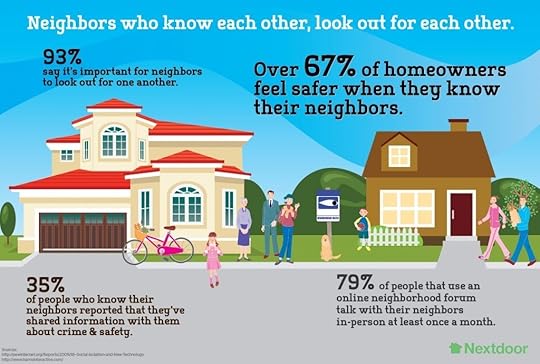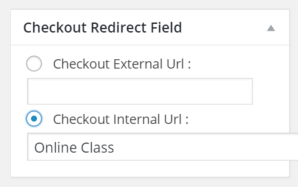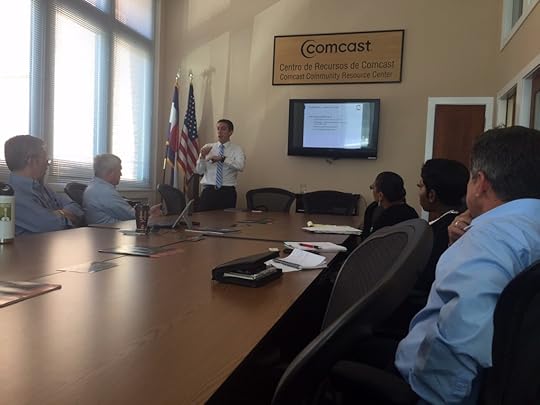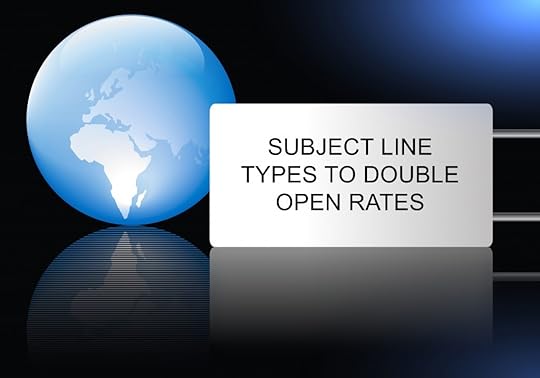Jacob S Paulsen's Blog, page 11
August 29, 2015
WooCommerce Plugin – Product Specific Thank You Page
We have just made available for sale another custom WordPress / WooCommerce plugin via our online store.
This plugin for WordPress and extension for WooCommerce allows the admin to designate a custom thank you page. When a custom thank you page has been set for a product, upon checkout the customer will see the order completed page for only a few seconds and then will be forwarded to the designated page. The custom thank you page is set in the product page settings as shown here:
You can easily set the custom page by inserting any custom URL or be selecting an existing WordPress page from the dropdown menu.
Marketers are using this tool to drive a customer to an upsell product as soon as they have finished buying a “trip-wire” product.
Original article: WooCommerce Plugin – Product Specific Thank You Page.






August 19, 2015
How To Make Your Blog Post Good Enough for Wikipedia
In a previous blog post I wrote about the process, value, and best practices of becoming a Wikipedia contributor. Today’s post is focused on best practices to write blog posts that are most likely to be referenced in Wikipedia pages. When an editor or contributor adds content or changes content to Wikipedia they are encouraged to give a reference for the information to ensure it’s credibility. You want to be that source.
The value of a link to your website from Wikipedia is very high. The page score and domain authority of Wikipedia is very high and search engines and users trust it as a non-bias source of content. In many ways this is the coveted inbound link of the internet. Instead of trying to game the system and start adding your links to Wikipedia pages (which is against their policy) you might go to the harder effort, but far more valuable process of just creating awesome content that is likely to get Wikipedia love.
What Type of Content Do Wikipedia Authors and Contributors Look For
Tutorials
Tutorials about how to do something go hand in hand with Wikipedia content.
Histories and Timelines
A good article about the history of something is going to make it super easy for a Wikipedia author to get all the relevant dates and facts they need.
Breaking News
Being the first person to update or publish a new Wikipedia page about something breaking is a coveted position to be in. If you can feed them the facts they will reward you with a reference link.
Insider Accounts
Wikipedia content is based on fact, research, and credible sources. If you have the insider scoop on something or someone you may find a Wikipedia contributor grateful for your contribution.
In Depth and Detailed Reports
Posts that start with “Everything You Need to Know About” tend to provide great insights about key events, companies, services, and other topics. Compile all the best information about a topic and publish it as a detailed report.
What Are Common Attributes Of Good Wikipedia References
Non-Biased Editorial
If you drop any clues, hints, or outright clear statements about your feelings on the subject you call all your content into question. For Wikipedia targeted content think like a news journalist whose job it is to give the facts.
Recency
Old content is no longer trusted or relevant. When you write make sure you include dates to clarify the recency of the information. Also if you have an awesome piece of content that is starting to date itself publish a new and updated piece of content to tell everyone what has changed and what hasn’t.
First Party Accounts or Sourced Data
Opinions aren’t facts. When you write, clarify if the data is first person (you were directly a witness of the facts) or give your source for the facts you are posting.
Unique and Hard to Find Information
Perhaps it goes without saying but if you are the only one who published the information then what choice would a Wikipedia contributor have but to link back to your content as a reference.
Optimized for Search
If a Wikipedia author or contributor is looking for a piece of information or a source for information they already have your piece of content had better be easy to find in search engines. Without a strong search strategy your Wikipedia game plan becomes really empty.
In summary I do think that Wikipedia Loved content is hard work. It isn’t likely to be that blog post that you quickly penned on Saturday afternoon. Identify the opportunities you have to go a little further into the content to produce quality instead of quantity and before you know it you will see Wikipedia on your traffic reports!
Original article: How To Make Your Blog Post Good Enough for Wikipedia.






August 5, 2015
Becoming a Wikipedia Editor and Contributor
Anyone can contribute to the content on Wikipedia. Marketers have a particular interest in the site since a relevant backlink to one’s site from Wikipedia can be very valuable. Naturally then it would make sense for any web marketer to become familiar with Wikipedia and where possible try to leverage it (within the Wikipdia guidelines) as a tool to drive awareness and traffic.
Relevant Wikipedia Guidelines:
As an author or editor it is prohibited to use Wikipedia to promote yourself, your website, or your organization. These are all considered conflicts of interest and are to be avoided.
Be neutral. This is not a place to get on your soap box. It is a play to play the role of non-bias editorial, confirmed, relevant, and valuable informational writer.
While I do not endorse trying to game the system or break the rules I do think you should consider the following:
Setup an Actual Profile
Anyone without a user account can make anonymous edits to Wikipedia pages but those edits are poorly trusted and impossible to followup on or track as the contributor. Setup an actual user account and work hard to build your reputation by following the below tips.
The More You Contribute The More You Are Trusted By Others
If you are a very active member of Wikipedia it shows in your profile. Editors and contributors are very weary of a new user who starts adding links to an external website. Red flag right? On the other hand if you truly work to benefit the website, content, and community everything you do is likely to be taken in good faith.
Legitimately Try to Add Value
If you focus on how you can create more value for others and less on how Wikipedia can create value for you, in the long run the relationship will be very strong and mutually beneficial. Don’t look to articles where you would like to have a link back and work hard to find a way to incorporate it. Instead ask yourself if you have content that can truly add to the readers experience and knowledge. If so add it and do it in a way that will add value to the reader.
Take it Slow – Learn The System
Wikipedia is a unique community with it’s own coding language, guidelines, and policies. Don’t rush in and start making tons of changes, edits, and additions. It won’t help you or the readers. Take it slow. Look for small edits you can make to truly improve content in areas where you have expertise or resources. Get familiar with and comfortable with the processes.
Document What You Do
Every time you make an edit to a page you will have the change to explain your changes and add any other relevant change notes to the “talk” page for other editors and contributors to see what you did and why you did it. If you are really adding value to readers you should have no reason not to be transparent and clear about the edits you have made. It will help your reputation and will also make it easier for you to track past contributions you have made.
Original article: Becoming a Wikipedia Editor and Contributor.






July 31, 2015
New WordPress Plugin – Extract Email Addresses from Text
Just a quick note to our readers to announce the availability of a new custom WordPress plugin we recently developed. While fairly niche, we have found so far that there are some email marketers out there who have expressed interest.
The new plugin called, “Extract Emails from Text” creates a tool, hosted on any WordPress page or post via shortcode, via which a user can paste any jumbled mess of text into a text box and push a button to have the plugin search for and extract every valid email address. Those email addresses are then provided one per line in a new text box so the user can copy and paste them out.

screenshot of how the tool displays
As you can see from the screenshot it also has an option to ignore any number or list of email addresses as well.
If you are interested you can find the plugin for sale in our online store.
Original article: New WordPress Plugin – Extract Email Addresses from Text.






July 16, 2015
Business to Business Online Marketing Tactics
Recently I presented a training at a local Chamber of Commerce for business leaders about how to correctly engage in business to business marketing online.
I talked about ten core principles:
Your Online Presence needs to be reflective of your best personal professional self.
You need to be human
You need to be found in the search engine
You need to have a website ready to capture leads
You need to offer up awesome valuable stuff for free
You need to target the few, ignore the masses
You need to do your homework
You need to leverage LinkedIn
You need to have a platform
You should read these three books
Here is the deck I used to present: B2B Marketing Solutions.
Original article: Business to Business Online Marketing Tactics.






July 2, 2015
Savvy Business and High Level Performance Reading Curriculum
Traditional education and I are not good friends. I attempted to get a 4 year degree in business with an emphasis on entrepreneurship and it didn’t work out. I don’t have good study skills and I have a chip on my shoulder as it relates to homework (which I think is just busy work). Add to that the cost of tuition and books and I’ve sworn it off forever. I do however think of myself as an educated person. In addition to the education I have derived from real life experience (which of course has no equal) I am an avid reader (or listener if you think listening to books doesn’t count as reading). Naturally, since learning by reading is something I am passionate about I’m always recommending books to people based on what they are looking to do/learn/change. Yesterday I was accused of “having a book for everything.”
On occasion I do run into people who ask more broadly for a book list that I would recommend. I have developed this book list for individuals who I am mentoring and I thought it would be appropriate to share it here. Since I’m always reading new books and discovering older books that are really awesome I will return to this post to update it when I find a new golden nugget I think has to be on this MUST READ list. (Click here for my article on how you can double the number of books you read)
Lastly, before I give you the list, let me disclaim that I’m listing these books in an order that I think naturally builds on itself. If you are looking for books about a specific subject you may want to jump around. Also, if you are looking for a good book list based on specific business or personal development categories you may want to check Josh Kaufman’s 99 Best Books List. He originally built the book as a curriculum he calls the Personal MBA. Since then he has written his own book which summarizes all the principles (listed below).
Rich Dad Poor Dad by Robert Kiyosaki
Richest Man in Babylon by George S. Clason
7 Habits of Highly Effective People by Stephen R. Covey
Good to Great by Jim Collins
Think and Grow Rich by Napoleon Hill
How to Win Friends and Influence People by Dale Cargnegie
The Greatest Salesman in the World by Og Mandino
21 Irrefutable Laws of Leadership by John C. Maxwell
Secrets of the Millionaire Mind by T. Harv Eker
Automatic Millionaire by David Bach
The Four Hour Workweek by Timothy Ferris
Made to Stick by Chip Heath and Dan Heath
Never Eat Alone by Keith Ferrazzi
The Power of Habit by Charles Duhigg
Leadership and Self Deception by the Arbinger Institute
The Five Dysfunctions of a Team by Patrick Lencioni
Start With Why by Simon Sinek
The ONE Thing by Gary Keller and Jay Papasan
Tribes by Seth Godin
What Got You Here Won’t Get You There by Marshall Goldsmith
Getting Things Done by David Allen
The Personal MBA by Josh Kaufman
The Speed of Trust by Stephen M.R. Covey
Built to Last by Jim Collins
The E-Myth Revisited by Michael E. Gerber
First Break All the Rules by Marcus Buckingham
To Sell is Human by Dan Pink
Raving Fans by Ken Blanchard
The Millionaire Next Door – Thomas Stanley & William Danko
Original article: Savvy Business and High Level Performance Reading Curriculum.






June 17, 2015
5 Ways to Increase Email Opens and Engagement
Today I’m going to share five simple and proven email marketing hacks to increase engagement and open rate.
Use Proven Subject Lines. Looking at the industry data you should probably consider subject lines that are one of the four. It is also important to rotate between these on a regular basis as your subscribers will eventually wear on any of these techniques.
Build curiosity
Be direct and state a benefit
Use urgency or scarcity
Show proof with case study or example
Unicode symbols are often call Glyphs and they draw a lot of attention in a subject line when used on occasion to draw a little extra attention. There are thousands and thousands of available Glyphs that you can use. Use http://emailstuff.org/glyph/search to look for a good glyph and get the code to use.
Leverage the Google Plus Profile in Gmail inboxes. If your from email address is verified on a Google + profile, your profile image will show up on the right hand side of the screen along with your profile name and potentially your latest shared item from your wall.
Don’t forget the second subject line. In your subscriber’s inbox after your subject they see the first several words of your HTML email. If the first text in your HTML email is “View This in Your Browser” or “Follow us on Facebook” or something similar that is not helping drive your open rate. Here is a good tutorial about how to control the hidden text in the HTML file that will be seen here.
Avoid the morning purge. The first thing people do in the morning when checking email is to delete about half of all the unread emails in their inbox. All of the stuff they are subscribed to that they just don’t feel they have the time to review first thing in the morning in their rush to get going. Don’t send your emails first thing in the morning… wait until after that first purge. Where possible better control this by individual time zone.
Original article: 5 Ways to Increase Email Opens and Engagement.






June 1, 2015
Making Voicemail a Tool of Productivity [Script]
 I don’t seem to get a ton of questions from friends or clients about how they should manage voicemail until they call me and hear my voicemail greetings. Voicemail is one more inbox that has to be managed in the scope of our productivity. In this article I’m going to share my feelings about how to manage voicemail along with my own scripts I currently use to help drive the right actions.
I don’t seem to get a ton of questions from friends or clients about how they should manage voicemail until they call me and hear my voicemail greetings. Voicemail is one more inbox that has to be managed in the scope of our productivity. In this article I’m going to share my feelings about how to manage voicemail along with my own scripts I currently use to help drive the right actions.
Voicemail Productivity Thoughts
Phone calls are generally speaking distractions. They interrupt you in the middle of highly focused activity. In an ideal world you want to limit distractions and while you can’t always influence the time when others call you, you can choose to let it go to voicemail so as not to cause a distraction when you are in the middle of a high priority task
When I send someone to voicemail I need to train that caller to work based on my system of productivity. This is good for the caller since they want a response as quickly as possible and good for me since I can choose how/when I’m going to respond to various inquiries
People always inflate the urgency or priority of their own requests. Most people who call me always think that whatever they are calling about is urgent and important. By giving them a good voicemail greeting I can force them to re-evaluate how urgent it really is.
I ALWAYS ask people to be descriptive in their message/email/text. This will avoid emails that say “call me when you can.” I hate those.
I always prefer an email or text to a voicemail because they imply that I can and should reply via email or text. Voicemails imply that one should respond with a phone call. Perhaps I’m not as social as I should be but the truth is I like the flexibility and it better plays to my schedule and timeline of availability and productivity.
Script for my Office Phone:
You have reached the phone of %Insert name% with %Insert Company name%. I check (or don’t check) my voicemail often but the fastest way to get a response from me is to send me an email at %insert email%. Please be descriptive in your email so I can support you in the most effective way possible. If this is an emergency please call my cell phone at %insert cell number%. Thank you.
When I’m Traveling:
You have reached the phone of %Insert name% with %Insert Company name%. I’m traveling and may not check my voicemail often until my return. The fastest way to get a response from me is to send me an email at %insert email%. Please be descriptive in your email so I can support you in the most effective way possible. If this is an emergency please call my cell phone at %insert cell number%. Thank you.
Script for my Cell Phone:
You have reached the phone of %insert name%. Please send me an email. I really don’t get to my voicemails very often but if you email me I’ll reply in short order. If you don’t have my email address send me a text to this number and I’ll gladly reply with my email address. If this is an emergency send me a text message with the details so I can respond accordingly. Thank you.
Original article: Making Voicemail a Tool of Productivity [Script].






April 15, 2015
Next Door Social Network Brings You Closer to Neighbors
Have you already downloaded and installed the Next Door app on your phone. Next Door is a social network that connects you with others in your neighborhood. When you open the app for the first time you need to input your address so it can identify the neighborhood to which you below. When you “post” to Next Door you can choose if your post will be seen by your neighborhood only or by the 3-8 neighborhoods near you as well.
I’ve been on Next Door for about a year and so far here are some of the more common content trends:
Lost and Found pets
Announcements about garage sells or things wanted or for sale
Questions about houses that are for sell
Announcements about community forums and classes by the local fire department and police department
HOA activities (Easter Egg hunt, block parties, etc)
Comments and questions about police and fire activity
Requests for recommendations (Vet, Dentist, Plumber, Electrician, Fence Repair, Contractor, Roofer, Pediatricians, Landscaping, Daycare, Babysitters)
Alerts about shady salesman, potential thieves, and other suspicious people
Occasional advertisements for Mary Kay, Avon, and related home based vendors
Elementary school fundraisers, activities, and help wanted
Local meetups like book groups, cycling groups, mom groups, etc.
Complaints about litter, cars driving too fast, etc.
I certainly feel more connected to the people around me and it does heighten my awareness of the things going on in the neighborhood. I think this is a great way to make our neighborhoods stronger and closer and would encourage you to check it out! Here is an infographic Next Door has recently shared:

Original article: Next Door Social Network Brings You Closer to Neighbors.






March 26, 2015
Online Money Machine Experiment Documented
 Online marketing is about building machines in which you can put in money on one side of the machine and more money comes out on the other side of the machine. These machines, often referred to as Funnels vary from very complex to very simple. I’m going to share an example of a very simple machine that will hopefully help those who are starting out in the machine building business.
Online marketing is about building machines in which you can put in money on one side of the machine and more money comes out on the other side of the machine. These machines, often referred to as Funnels vary from very complex to very simple. I’m going to share an example of a very simple machine that will hopefully help those who are starting out in the machine building business.
First I had to identify a product that appealed to me and had a strong conversion rate. I searched on ClickBank, as they make it really easy to identify potential products/offers based on their conversion rate and potential earnings per sale, per click, etc. I found something that looked good and I did some math to get a sense for on average how much I could afford to pay per click to drive sales.
Second, I decided to run this test on Facebook as the traffic is cheap and its easy to narrow in on my target consumer for this product. I setup a new campaign and used the interests targeting parameter to identify potential customers based on their shared interests around products like the one I am going to offer. I set a daily budget at $5 because I’m cheap and patient. The danger in setting a budget this low is that many of us will be fooled after only a few days of data into thinking it works really well or doesn’t work very well after a very limited data sample.
Third, I create the ad with a few different relevant images so Facebook can test them to see which is better. I write some copy and submit the campaign to Facebook for approval. They approve it within about 2 hours and it starts to run.
After 3 days I check in. I’ve generated one sell so far. I do the math to see that I’m made slightly more in commissions than I spent in ads at this point. The machine appears to be working. I increase the daily spend from $5 to $10 based on these results and let it continue to run. At this point both images are seeing comparable results so I let both ads run.
Two days later I check in. I do the math on the commission from the several sells generated vs the ad spend and I’m still running at a positive. The machine is still working. Now, with far more data I can see that one of the ads is performing better than the other. I cancel the poorer of the two ads. Then I duplicate the winner once again and change the headline ad copy on the new ad to see which of these will perform better. Now that we have figured out the better image I want to nail down the best potential headline.
Three days later I check in. The machine is still profitable. I have a winning headline so I disable the poorer performing of the two current ads. I try a new experiment. I want to also use this campaign to build my email list while still keeping the machine profitable. So I build a web page with a small email capture form, often called a squeeze page. I link the Facebook ad to this new squeeze page. When users land on the page they are given copy to the effect of: “Before we show you the awesome thing you want to see, do you want to get awesome emails from us? If yes input your first name and email address and click continue. If not click the button below that says No, thanks.” Either button takes them to the product offer.
Two days later I check in. The machine is still profitable… in fact it is just as profitable as it was before adding the squeeze page. What is even better? 10% of clicks from the Facebook ad fill out the form on the squeeze page to join my email list. 47% click on no thanks, and the remaining 43% bounce off this page. Since the machine is still profitable I assume that 43% were not likely to buy the product anyway. I increase the spend to $15 per day.
Three days later I check in. I have a lot more data now since adding the squeeze page and the numbers continue to tell the same story. I once again start to split test some variables in the ad.
This is the short story of how a sales funnel can work. In this case I’m promoting someone else’s product and getting paid a commission. If it were my own product things may change some and I would have to worry about the product sales page and funnel. The point is it takes very little total investment in order to test some assumptions and generate a profit. Does that open your mind a little?
Original article: Online Money Machine Experiment Documented.












